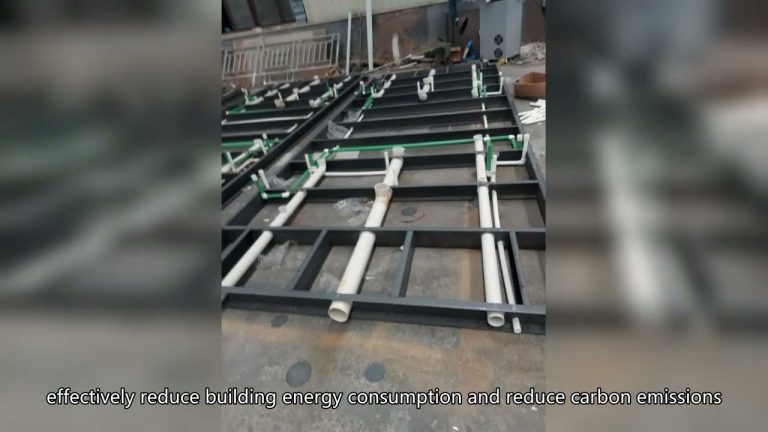Analyze the data transmission and communication system of the box house in the temporary scientific research experiment platform and observation station.
Table of Contents
Benefits of Implementing Advanced Data Transmission Systems in Temporary Scientific Research Platforms
In the realm of scientific research, data transmission and communication systems play a crucial role in ensuring the success of experiments and observations. This is especially true in temporary scientific research platforms and observation stations, where the need for reliable and efficient data transmission is paramount. One such example is the box house, a temporary structure used for scientific research experiments in remote locations.
The box house is equipped with advanced data transmission and communication systems that allow researchers to collect and analyze data in real-time. These systems include satellite communication, wireless sensors, and data loggers, among others. By implementing these advanced technologies, researchers are able to monitor environmental conditions, track wildlife movements, and gather other important data without the need for constant physical presence at the site.
One of the key benefits of implementing advanced data transmission systems in the box house is the ability to collect data remotely. This means that researchers can access and analyze data from the comfort of their own labs or offices, saving time and resources that would otherwise be spent on travel to and from the research site. Additionally, remote data collection allows for continuous monitoring of environmental conditions, which is essential for understanding long-term trends and patterns.
Another benefit of advanced data transmission systems in the box house is the ability to share data with other researchers and institutions. By using satellite communication and other technologies, researchers can easily share data with colleagues around the world, facilitating collaboration and the exchange of ideas. This not only enhances the quality of research but also promotes a more holistic understanding of complex scientific phenomena.
Furthermore, advanced data transmission systems in the box house enable researchers to respond quickly to changes in environmental conditions. For example, if a sudden weather event occurs, researchers can receive real-time data alerts and adjust their research protocols accordingly. This flexibility is essential for conducting successful scientific experiments in dynamic and unpredictable environments.
In addition to these benefits, advanced data transmission systems in the box house also improve the safety and security of researchers. By monitoring environmental conditions remotely, researchers can avoid potentially dangerous situations and ensure the well-being of themselves and their equipment. This is especially important in remote and harsh environments where access to medical assistance or other resources may be limited.
Overall, the implementation of advanced data transmission systems in the box house offers numerous benefits for scientific research. From remote data collection to enhanced collaboration and improved safety, these systems play a crucial role in the success of experiments and observations in temporary research platforms. As technology continues to advance, researchers can expect even greater capabilities and efficiencies in data transmission and communication systems, further enhancing the quality and impact of scientific research.
Challenges and Solutions for Communication Systems in Observation Stations in Remote Locations
In remote locations where scientific research experiments are conducted, communication systems play a crucial role in transmitting data and ensuring the safety of researchers. One such example is the box house in the temporary scientific research experiment platform and observation station. This unique structure presents challenges in data transmission and communication due to its isolated location and harsh environmental conditions.
The box house serves as a temporary shelter for researchers conducting experiments in remote areas. It is equipped with various sensors and instruments to collect data on environmental conditions, wildlife behavior, and other research parameters. However, transmitting this data to a central location for analysis and monitoring poses a significant challenge.
One of the main challenges faced by the box house communication system is the lack of reliable internet connectivity. In remote locations, access to high-speed internet is limited, making it difficult to transmit large amounts of data in real-time. This can hinder the progress of research projects and delay the analysis of critical data.
To address this challenge, researchers have implemented satellite communication systems in the box house. Satellite internet provides a reliable connection to the outside world, allowing researchers to transmit data efficiently and communicate with their colleagues and support teams. While satellite internet can be expensive, it is essential for ensuring the success of research projects in remote locations.
Another challenge faced by the box house communication system is the vulnerability to extreme weather conditions. In remote areas, the box house is exposed to harsh weather, including strong winds, heavy rain, and snowstorms. These conditions can damage communication equipment and disrupt data transmission, putting researchers at risk and jeopardizing the success of their experiments.

To mitigate the impact of extreme weather on the communication system, researchers have installed weatherproof enclosures for sensitive equipment and antennas. These enclosures protect the communication equipment from the elements and ensure that data transmission remains uninterrupted, even during severe weather events. Additionally, regular maintenance and monitoring of the communication system are essential to identify and address any issues before they escalate.
Despite these challenges, the box house communication system has proven to be effective in facilitating scientific research in remote locations. By implementing satellite internet and weatherproofing measures, researchers can overcome the limitations of the communication system and ensure the success of their experiments. The data collected from the box house provides valuable insights into the natural world and contributes to our understanding of complex ecosystems and environmental processes.
In conclusion, the box house in the temporary scientific research experiment platform and observation station presents unique challenges for data transmission and communication systems in remote locations. By implementing satellite internet and weatherproofing measures, researchers can overcome these challenges and ensure the success of their research projects. The data collected from the box house is essential for advancing scientific knowledge and addressing pressing environmental issues. Through innovative solutions and careful planning, researchers can continue to conduct groundbreaking research in even the most remote and challenging environments.






